[subpages]
_culture
Art Exhibitions
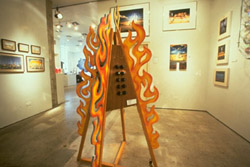
Can the art of Burning Man be taken out of its playa context and successfully presented in a museum setting? The answer is a resounding “Yes!” Using photographs and videos for context, large scale sculpture, material culture, mutant vehicles, jewelry, and costumes have been shown to the public beyond Burning Man, spreading our ethos even further out into the world.
Burning Man has presented three art exhibitions since 1998: two featuring art installations, photographs, and video, and one focusing on neon. From a curatorial point of view, showing Burning Man art can be difficult, as many of the installations created on the playa have been burned and are available to us only in photographs, and the scale of much of the work is prohibitive. However, we’ve managed to show actual art from the playa as well as other work our artists have created.
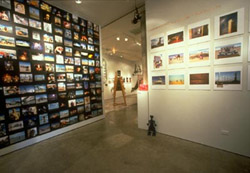 Our first exhibit was The Art of Burning Man at the San Francisco Art Commission Gallery, July 29 to August 29 1998. The second was an updated version of The Art of Burning Man at Theater Bruka in Reno, July 9 to 31, 1999. Our third exhibit, at the Museum of Neon Art in Los Angeles, took place from December 11, 1999 through March 12, 2000 and was curated by LadyBee.
Our first exhibit was The Art of Burning Man at the San Francisco Art Commission Gallery, July 29 to August 29 1998. The second was an updated version of The Art of Burning Man at Theater Bruka in Reno, July 9 to 31, 1999. Our third exhibit, at the Museum of Neon Art in Los Angeles, took place from December 11, 1999 through March 12, 2000 and was curated by LadyBee.
In addition, six independent arts organizations have staged exhibitions of Burning Man art. In the summer of 2001, the Sonoma Museum of Visual Art showed six large-scale outdoor sculptures, and in 2007, the Nevada Museum of Art in Reno showed A Tribe of Artists: Costumes and Culture of Burning Man, Geoffrey Nelson’s photographs and costumed mannequins.
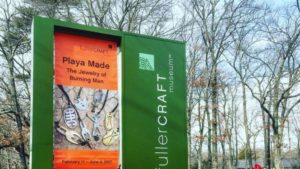
In 2017, three museum shows took place:
Playa Made: Jewelry of Burning Man, guest curated by LadyBee and based on the book of the same name, debuted at the Fuller Craft Museum in Brockton, Massachusetts; this exhibit was shown from February 11 through June 4, 2017. WBUR, Boston’s NPR affiliate, nicely reviewed the exhibit.

Virginia’s Hermitage Museum showed Burning Man art from June 3 through October 14.The concept for the show originated with the Hermitage’s Executive Director Jen Duncan in 2015. “I think that Burning Man is an incredibly powerful way for people with shared passions to connect whether it’s through art, music, religion, or other ideas,” Duncan said. “The festival removes any barrier from the experience, makes it more interactive, with fewer rules constraining the visitor and the artist. The art created at Burning Man is only available for a limited time each year, and I believe that it can stand on its own and should be displayed in the museum setting as well.” Read more about it in the Burning Man Journal and in the Virginian Pilot.

The Nevada Museum of Art showed its archival exhibit, City of Dust, The Evolution of Burning Man from July 1, 2017 through January 7, 2018. The show grew out of Danger Ranger’s gift of his extensive personal archives to the NMA’s Center for Art and Environment, where curators William Fox and Anne Wolfe developed the exhibit, working with Burning Man. They created a documentary, and several Burning Man staff members delivered presentations on the art and culture of Burning Man. We were also featured in the Center’s annual conference, Art and Environment, October 19-21, 2017. The exhibit was reviewed in Moonshine Ink.
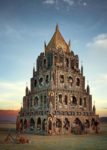
In 2018, part of the NMA exhibit travelled to the Smithsonian in Washington D.C. as part of the Renwick Gallery’s major exhibit, No Spectators: The Art of Burning Man. Opening on March 30, 2018, this important exhibit explores the art, mutant vehicles, jewelry, costumes and photography of Burning Man, as well as our history and ethos; the Renwick’s curator Nora Atkinson worked closely with Burning Man to develop the exhibit. In addition, six sculptures from the playa will be shown throughout the surrounding neighborhood in an outdoor extension of the exhibit, No Spectators: Beyond the Renwick. Programming includes a gala opening, a “Meet the Artists” event in the galleries, and presentations by several staff members.
Polls Archive
Each year Black Rock City is raised from the surface of the desert as a result of the cooperation and participation of many. It is only by combining our collective efforts that we can create the experience that is Burning Man. As such, we invite and encourage the input and opinions of our participants about a wide variety of issues related to Burning Man.
From 2003-2008, we gathered participant input through polls. Now that there are so many other mechanisms for expressing opinions, we discontinued polling. We may start again in the future, who knows. Here are the polls we ran:
2008 ARCHIVED POLLS
| What did you think of the size of Black Rock City in 2008? | |||||||||||
|
June 12, 2008 to August 12, 2008
| What do you think of the new Burning Blog? | |||||||||
|
March 11, 2008 to May 11, 2008
| Did the Green Man theme inspire you to green your day-to-day life? | |||||||||||
|
2007 ARCHIVED POLLS
| What did you think of Burning Man 2007? | |||||||||||
|
December 28, 2006 to January 28, 2007
| When do you start planning your theme camp? | |||||||||||||
|
2006 ARCHIVED POLLS
| What did you think of Burning Man 2006? | |||||||||||
|
July 19 to August 19, 2006
| How do you light your art, rebar and bike on the playa? | |||||||||||||
|
February 26 to March 26, 2006
| When do you register your theme camp, art installation or mutant vehicle? | |||||||||||
|
2005 ARCHIVED POLLS
| How do you feel about the 2006 Art Theme “Hope and Fear: The Future”? | |||||||||
|
October 26 to November 26, 2005
| What did you think of Burning Man 2005? | |||||||||||
|
September 22 to October 22, 2005
| How do you connect with fellow Burners after the event? | |||||||||||||
|
July 14 to August 14, 2005
| What do you do with the Survival Guide? | |||||||||||
|
May 6 to June 6, 2005
| What do you think of the new Black Rock City Plan? | |||||||||||||
|
April 5 to May 5, 2005
| When do you visit theme camps? | |||||||||||||||
|
February 16 to March 16, 2005
| How do you read the JRS? | |||||||||||||||||||
|
December 29, 2004 to January 31, 2005
| What day of the year do you consider the beginning of your “new year”? | |||||||||||||
|
2004 ARCHIVED POLLS
December 2 to December 23, 2004
August 2 to August 23, 2004
July 12 to July 26, 2004
May 20 to June 10, 2004
April 6 to April 27, 2004
Feb 26 to March 11, 2004
Jan 27 to Feb 26, 2004
2003 ARCHIVED POLLS
|
|||||||||||||||||||||||||||||||||||||||||||||||||||||||||||||||||||||||||||||||||||||||||||||||||||||||||||||||||||||||||||||||||||||||||||||||||||||||||||||||||||||||||||||||||||||||||||||||||||||||||||||||||||||||||||||||||||||||||||||||||||||||||||||||||||||||||||||||||||||||||||||
Fiscal Sponsorship
What is fiscal sponsorship?
Fiscal sponsorship is an activity by which a public charity facilitates tax-deductible donations to a project by providing some oversight of projects that serve a public benefit but do not have their own non-profit status. Fiscal sponsorship allows projects to receive tax deductible contributions that an independent project might not otherwise be able to receive.
What is Burning Man’s History with fiscal sponsorship?
Burning Man Project inherited the program from the Black Rock Arts Foundation (BRAF) in 2015. In 2014, BRAF started offering fiscal sponsorship to projects that had received an Honoraria grant from Black Rock City, LLC to bring art to the Burning Man event. When Burning Man Project merged with BRAF, Burning Man Project continued to support the program. Since 2015, Burning Man Project invested in capacity building around this program. From 2015 – 2018 Burning Man sponsored 71 projects, which raised a combined total of $872k using the program over the four year period. At the end of 2018, after reviewing the national landscape of fiscal sponsors and its own ability to provide an impactful and sustainable service to the community, Burning Man decided to roll back the program in favor of refocusing its capacity in other program areas. We will only offer fiscal sponsorship in a few select cases.
May I apply for Fiscal Sponsorship with Burning Man?
Burning Man Project no longer offers this as a standard program, if you think you may qualify for an exception please email fiscalsponsorship@burningman.org.
Does Burning Man still sponsor project or organizations?
On rare occasions, Burning Man may continue to offer or engage in a new fiscal sponsorship agreement with a mission aligned project or organization.
If you have any outstanding fiscal sponsorship needs, please refer to the two resources linked below and/or send an email to fiscalsponsorship@burningman.org.
More information:
Evolution of Black Rock City
You can learn about the urban planning and design that went into the evolution of Black Rock City, home to the people of Burning Man, in Metropol, the blog series created as part of the Burning Man 2010 art theme “Metropolis: The Life of Cities”.
You can also read the Building Black Rock City series, which chronicles each year’s process of building the infrastructure for our ephemeral desert metropolis.
Burning Academics
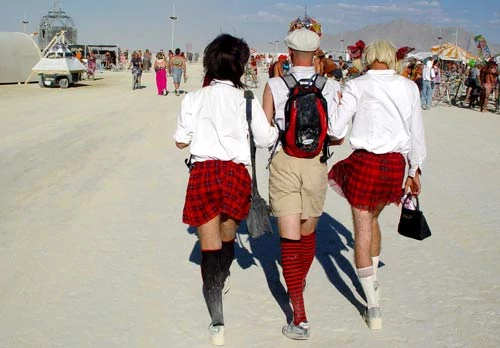
Academics have long been drawn to Burning Man, creating a rich and growing body of research and scholarly analysis regarding the event and the culture. Since 2010, the Burning Nerds group has served as a networking hub for researchers and thinkers in sociology, anthropology, architecture, art, economics, spirituality and many other disciplines.
Burning Man encourages academic projects by providing access to the Burning Man archives, photo and video passes on the playa, staff and participant interviews, and other forms of support for research and educational efforts. To request information for your own research, or to contact us about other academic opportunities, please fill out this form.
The Black Rock City Census is often cited in published works, too. Peruse the Census citations here.
Bowditch, Rachel (Performance & Ritual)
(2010) On the edge of Utopia: Performance and ritual at Burning Man. Chicago, Il: University of Chicago Press.
(2010)” The somatic city: Rehearsing utopia at the Burning Man festival.” XCP: Cross Cultural Poetics. Urban Feel. #23
(2007) “Temple of tears: Revitalizing and inventing ritual in the Burning Man community in the Black Rock desert of Nevada.” The Journal of Religion &Theatre, Vol. 6, No. 2, 140-154.
(2007) “Dancing with fire: The ultimate effigy.” Puppetry International Magazine Issue 22.
Chen, Katherine K. (Organization & Sociology)
(2012) “Charismatizing the Routine: Storytelling for Meaning and Agency in the Burning Man Organization.” Qualitative Sociology 35(3): 311–334.
(2012). “Laboring for the Man: Augmenting Authority in a Voluntary Association.” Research in the Sociology of Organizations 34:135-164.
(2011) “Artistic Prosumption: Cocreative Destruction at Burning Man.” American Behavioral Scientist 56(4): 570-595.
(2011) “Lessons for Creative Cities from Burning Man: How organizations can sustain and disseminate a creative context.” City, Culture and Society 2(2): 93-100.
(2009) Enabling creative chaos: The organization behind the Burning Man event. Chicago, IL: University of Chicago Press.
(2009) “Authenticity at Burning Man.” Contexts 8(3): 65-67.
(2005) “Incendiary incentives: How the Burning Man organization motivates and manages volunteers.” In L. Gilmore & M. Van Proyen (Eds.), Afterburn: Reflections on Burning Man (109-128). Albuquerque, NM: University of New Mexico Press.
(2003) “Coordinating contributing members: How the Burning Man organization forms an ‘alternative’ artistic community in the Nevada Black Rock Desert.” Pp. 56-61 in People Shaping Places Shaping People Environmental Design Research Association (EDRA) Proceedings 34. Eds. Julia W. Robinson, Kathleen A. Harder, Herbert L. Pick, and Virajita Singh
(2003) “Burning Man lights a fire: The Nevada desert event doesn’t just produce art, it produces citizens.” In the Fray.
(2003) “Growth at Burning Man: An anthropological view.” Blacktop Gazette: Decompression Issue 2(3).
(2002) “The alternative in the desert: On the Burning Man organization.” Alumni Quarterly Colloquy: 16. The Graduate School of Arts and Sciences Harvard University.
Clupper, Wendy (Performance Art & Erotic Politics)
(2011) “Darwin loves you: The evolution of performance art thanks to Burning Man.” Festivals and Faires in the United States. New York: Mellon Press.
(2009) “The erotic politics of Critical Tits: Exhibitionism or feminist statement?” Political Performances: Theory and Practice. New York/ Amsterdam: Rodopi Press.
(2007) “Burning Man: Festival culture in the United States, Festival Culture in a Global Perspective.” Festivalising! Theatrical Events, Politics and Culture. New York/Amsterdam: Rodopi Press.
(2007) “The Performance Culture of Burning Man.” Dissertation, University of Maryland, College Park. School of Theatre, Dance and Performance Studies. http://drum.lib.umd.edu/bitstream/1903/7405/1/umi-umd-4825.pdf
Doherty, Brian (Underground Culture)
(2004) This is Burning Man: The rise of a new American underground. New York NY: Little, Brown & Co.
(2015) “(Re)créer le monde à Burning Man. Jeu, don et créativité rituelle”, Revue du MAUSS semestrielle 46 : 220-250.
(2015) “Burning Man’s Gift-Driven, Event-Centred Diaspora ,” Revue du MAUSS permanente, 24 janvier 2015 [en ligne].
(2014) “Intimate circles and mass meetings. The social forms of event-structured religion in the era of globalized markets and hyper-mediatization” in Social Compass 61(2): 261-271.
(2013) “The Enchantments of Consumer Capitalism. Beyond Belief at the Burning Man Festival,” dans F. Gauthier et T. Martikainen (dir.), Religion in Consumer Society. Brands, Consumers and Markets, Farnham : Ashgate, pp.143-158.
(2011) “Les HeeBeeGeeBee Healers au Festival Burning Man. Trois récits de guérison, Ethnologies, Vol.33, No.1 : 191-215.
(2010) “Du bon usage des drogues en religion. Consommations néo-chamaniques à Burning Man,” Drogues, santé et société, Vol.8, No 1 : 202-237.
(2010) “De l’errance à l’extase : les quêtes du Festival Burning Man,” dans Nicolas Ducournau, Jocelyn Lachance, Louis Mathiot et Meryem Sellami (dir.), La recherche d’extase chez les jeunes. Troubles alimentaires, Scarifications, Psychotropes, Errances, Ste-Foy (Québec), Presses de l’Université Laval, pp. 63-71.
(2004) “Le Temple de l’Honneur. Rituels et deuils au Festival Burning Man,” dans Frontières, Vol. 17, No 1 : 87-90.
Gilmore, Lee (Spirituality & Ritual)
(2010) Theatre in a crowded fire: Ritual and spirituality at Burning Man, University of California Press. Gilmore, L., & Van Proyen, M. (Eds.).
(2005) Afterburn: Reflections on Burning Man. Albequerque, NM: University of New Mexico Press.
(2003) “Fires of the heart: Ritual, pilgrimage and transformation at Burning Man.” In L. Gilmore & M. Van Proyen (Eds.), Afterburn: Reflections on Burning Man (43-62). Albequerque, NM: University of New Mexico Press.
Heller, S. Megan (Ritual)
(2016) “Memories of Burning Man.” In Clare L. Boulanger (Ed.), Reflecting on America: Anthropological Views of U.S. Culture, 2nd edition. Taylor & Francis / Routledge. p.181-192.
Hockett, Jeremy (Ethnography & Self)
(2005) “Participant observation and the study of self: Burning Man as ethnographic experience.” In L. Gilmore & M. Van Proyen (Eds.), Afterburn: Reflections on Burning Man. Albequerque, NM: University of New Mexico Press.
Hoover, Duane J. (Organization & Management)
(2008) “Realizing the artful in management education and development: Smoldering examples from the Burning Man Project.” Journal of Management and Organization. November.
Institute of Noetic Sciences (Collective Consciousness)
(2017) “A Disturbance in the Force: Exploring Collective Consciousness at Burning Man“ Ions Report. March.
Ji, Yuan (Business Law)
(2013) “Burning Man: A case study of altruism thriving in a for-profit organiational form and the rationales for LLC -to-nonprofit conversion.” In Hastings Business Law Journal. Vol 9-3. p.449-484. UCLA.
Kehoe, Kara Leeann (Communications)
(2011) Thesis: “Burning Man Was Better Next Year.a phenomenology of community identity in the Black Rock counterculture.” California State University, Sacramento. Communication Studies Department.
Kozinets, Robert V & Sherry Jr., John F. (Marketing, Social Media & Consumer Culture)
Kozinets, Robert V & Sherry Jr., John F.
(2007) “Agents in paradise: Experiential co-creation through emplacement, ritualization, and community,” in Consuming Experiences, ed. Antonella Carù and Bernard Cova, London and New York: Routledge, 17-33.
(2007) “Comedy of the commons: Nomadic spirituality at Burning Man.” In R. Belk & J.F. Sherry Jr. (Eds.), Consumer Culture Theory, Vol. 11 of Research in Consumer Behavior (119-147). Oxford: Elsevier.
(2005) “Welcome to the Black Rock Café.” In L. Gilmore & M. Van Proyen (Eds.), Afterburn: Reflections on Burning Man (87-106). Albequerque, NM: University of New Mexico Press.
(2004) “Dancing on common ground: Exploring the sacred at Burning Man.” In G. St. John (Eds.), Rave Culture and Religion (287-303). New York and London: Routledge.
(2003) “Sacred iconography in secular space: Altars, alters, and alterity at the Burning Man project.” in Contemporary Consumption Rituals: A Research Anthology, eds. Cele Otnes and Tina Lowrey, NJ: Lawrence Erlbaum, 291-311.
(2003) “The moment of infinite fire.” In S. Brown & J.F. Sherry Jr. (Eds.), Time, Space, and the Market: Retroscapes Rising (199-216). New York: M. E. Sharpe.
(2002) “Can consumers escape the market? Emancipatory illuminations from Burning Man.” Journal of Consumer Research, 29 (June), 20-38.
(2002) “Desert pilgrim.” Consumption, Markets and Culture. 5 (September), 171-186.
Kristen, Christen aka Lady Bee (Art)
(2007) “Fire Art of Burning Man. Playing with Fire.” Leonardo online Vol 40, no. 4
(2006) “Reconnecting Art and Life at Burning Man.” Raw Vision. Issue 57:Winter.
(2003) “The Outsider Art of Burning Man” Leonardo on-line vol. 36, no. 5.
Krukowski, Samantha, ed. (History of Burning Man)
(2014) “Playa Dust – Collected Stories from Burning Man.” Black Dog Publishing, UK. ISBN 978-1-908966-64-3.
Larsen, Dawn (Theatre Studies)
(2012) Burning Man: Professor Coaxes Theatre Students ‘Out of Their Boxes’ with Annual Field Trip to Counterculture Festival. Southern Theatre 53.2 (Spring 2012): 22-25, 29.
McCrae, Kateri S., Heller, Megan, John, Oliver P., & Gross, James J. (Emotional Regulation)
(2011) “Context-Dependent Emotion Regulation: Suppression and Reappraisal at the Burning Man Festival.” Basic and Applied Social Psychology, 33:4, 346-350 http://dx.doi.org/10.1080/01973533.2011.614170
Moore, Stephan and Smallwood, Scott
(2011) “The Soundscape of Burning Man.” Soundscape Journal. Vol. 11, Number 1, Fall/Winter, pp. 47-51.
(2013) “Sound Art at Burning Man: Sonic Interventions in an Extreme Environment.” In Proceedings of the Symposium Musique et écologies du son / Music and ecologies of sound, Universite Paris 8, Paris, May 27-30, 2013. This paper describes the type of sound art work that is exhibited at the Burning Man Festival, focusing on the environmental and social factors that go into planning, conceptualizing, and building these artworks.
Moore, Stephan, Ogawa, David and Smallwood, Scott
(2011) “Metafiscal Services in the Middle of Nowhere.” Presented at the Radical Aesthetics and Politics: Intersections in Music, Art, and Critical Social Theory, Hunter College, CUNY, December. This paper describes at art project entitled the KTM (Karmic Teller Machine), a conceptual sound art piece that has been exhibited at the Burning Man event since 2007.
Morehead, John W. (Religion and Culture)
(2013) “Burning Man and Rituals of Inversion”. Encyclopedia of Humor Studies. Sage Publications.
(2011) “Burning Man Festival: A Life-Enhancing, Post-Christendom, ‘Middle Way’“. Saarbrücken, Germany: LAP Lambert Academic Publishing.
(2010) “From a Marginalized Community to a New Spiritual Order: Lessons at Burning Man Festival, in Perspectives on Post-Christendom Spiritualities” (119-144). Sydney: Morling College Press.
(2009) “Burning Man Festival in Alternative Interpretive Analysis“, Sacred Tribes Journal 4, no. 1: 19-41.
(2009) “Burning Man Festival“, Sacred Tribes Journal Encyclopedia of New Religious Movements.
(2009) “Alternative Cultural Events“, Sacred Tribes Journal Encyclopedia of New Religious Movements.
Pike, Sarah (Comparative Religion)
(2010) “Performing Grief in Formal and Informal Rituals at the Burning Man Festival,” in: Weinhold, J. & Samuel G. (eds.) “The Varieties of Ritual Experience,” in Ritual Dynamics and the Science of Ritual. Volume II – Body, Performance, Agency and Experience, ed. by Axel Michaels et al. Wiesbaden, Germany: Harrassowitz
(2005) “No Novenas for the Dead: Ritual Action and Communal Memory at the Temple of Tears,” in Afterburn: Reflections on Burning Man, edited by Lee Gilmore and Mark Van Proyen. University of New Mexico Press
(2001) “Desert Goddesses and Apocalyptic Art: Making Sacred Space at the Burning Man Festival” in God in the Details: American Religion in Popular Culture, edited by Katherine McCarthy and Eric Mazur. New York: Routledge, Inc.
Quaak, Larissa (Cultural Anthropology)
(2017) Re-presenting the present. The (r) evolution of the Burning Man Festival, Master Thesis, Cultural Anthropology.
Radziwill, N. M. & Benton, M. C. (Integrated Science and Technology)
(2013) “Burning Man – Quality and Innovation in the Spirit of Deming.” Journal for Quality and Participation, April, p. 7-11
Reisfeld Shafer, Stephanie
(2017) “The Impact of Immersion: A Case Study of Burning Man and its Implications for Audience Engagement,” American Journal of Arts Management, May 2017 issue
Rosenbloom, Rebecca E.
(2017) “Aural Substance: An Ethnographic Exploration of Regional Burn Soundscapes,” MA Thesis, Temple University, 2017
St. John, Graham
(2017) Charms War: Dance Camps and Sound Cars at Burning Man. In Graham St John, ed., Weekend Societies: Electronic Dance Music Festivals and Event-Cultures, 219–244. New York: Bloomsbury.
(2017) Blazing Grace: The Gifted Culture of Burning Man. NANO: New American Notes Online, 11 (July), Special issue “Economies of the Gift in an Age of Austerity” edited by Jennie Stearns and J.P. Craig.
(2017) Civilised Tribalism: Burning Man, Event-Tribes and Maker Culture. Cultural Sociology. Online First. Nov 1 2017.
(2014) Begoggled in the Theater of Awe: Electronic Dance Music Culture at Burning Man. In Samantha Krukowski, ed., Playa Dust: Collected Stories from Burning Man, 144–159. London: Black Dog Publishing.
(2009) “12 noon, Black Rock City.” Dancecult: Journal of Electronic Dance Music Culture. 1(1).
(2007/11/09 – 3:22pm). “Begoggled in the mega-vibe @ Burningman.” Undergrowth.
Turner, Fred (New Media Production)
(2009) “Burning Man at Google: a cultural infrastructure for new media production.” New Media & Society 11, no. 1-2: 73-94.
Downtown Project
Revitalizing Las Vegas
Starting in 2012, Burning Man provided creative consulting to Downtown Project, partnering to bring vibrant, interactive art and culture to downtown Las Vegas in an urban revitalization program focused as much on arts and education as on entrepreneurship and small business growth.
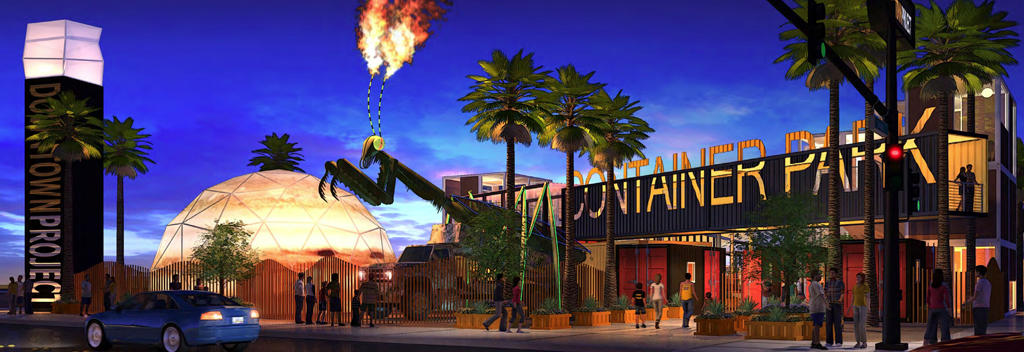
Burning Man staff led a daylong design charrette to help Downtown Project strategize its participation in Las Vegas’s First Friday public art event, leading to more opportunities for interaction and connectedness among participants and strengthening the event’s civic-minded emphasis.
Burning Man also arranged for the YES (Youth Education Spacehip) project to land in Las Vegas, with placement in Downtown Project’s Learning Village and a commitment to educational programming.
Youth Education Spaceship (YES)
Burning Man worked closely with artist Dana Albany to bring the Y.E.S. project to life: a mobile spaceship classroom built from repurposed and found objects, designed and built together with kids from San Francisco’s Tenderloin and Hunters Point neighborhoods. This collaborative art program, which Burning Man co-sponsored along with the Exploratorium, Maker Faire, The Crucible and private donors, gives young people the time and space to create, participate, and then exhibit their work, while engaging children in hands-on experience focusing on art and technology.
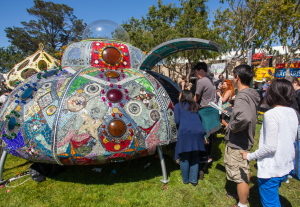
During the course of three months, the children made model spaceships and created mosaic stars and imaginary planets out of recycled glass, mirror, tiles, and repurposed objects. Their work adorns the exterior of the spacecraft. At the Crucible, the kids learned how to make fused glass tiles and the art of glass sand-casting, which has been installed in the interior. During the formation of the spacecraft they were engaged in discussions about recycling, creative reuse, environmentalism, solar energy, LED lighting, photography, soundscape creation, robotics, space travel and astronomy.The result of this effort is an engaging, highly interactive mobile classroom for the teaching and learning of art and science.
Art Installations Archive
Playa Artifacts Archive
Welcome to the fascinating world of material culture. The artifacts and gifts that people give one another at Burning Man reveal a great deal about themselves and give us information on ways of life, spiritual values and customs, which are not recorded elsewhere.
Gift-giving on the playa joins creative expression with delighted acceptance. These objects are often given spontaneously for the pleasure of giving and receiving. We delight in the charm of a 2-inch man made from one piece of copper wire and puzzle over the meaning of a playing card chosen and handed to you by a citizen in passing.
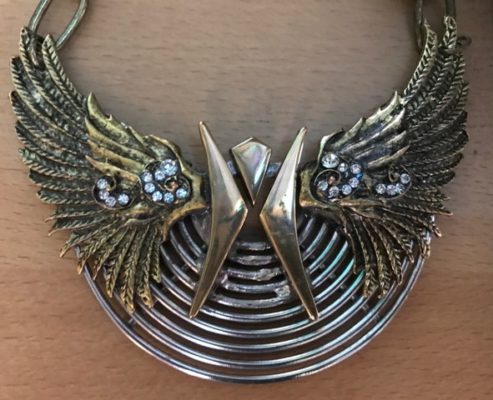
Sometimes they are given for utilitarian reasons: to thank somebody for a drink of water or a pretty little bag to help collect MOOP (Matter Out of Place). Burning Man seems to inspire the urge to create and give, and anyone inclined to make a gift generally experiences an appreciative reception.
Burning Man’s repository of playa gifts has grown to include such ephemera as stickers, decals, stamped coins, temporary tattoos, buttons, trading cards, cigarette lighters, embroidered patches, postcards, notepads, photocopied booklets and matchbooks.
It also contains arts and crafts, including silk-screened prints, T-shirts, stamps, etchings, silver charms, blown-glass pendants, medallions and small boxes of ashes collected from the Man burn.
Not all of the objects Burning man collects are mass-made playa gifts. Some are one-of-a-kind artworks. Some are artifacts from events, theme camps and art installations. Others are mementos given to volunteers in the various departments.
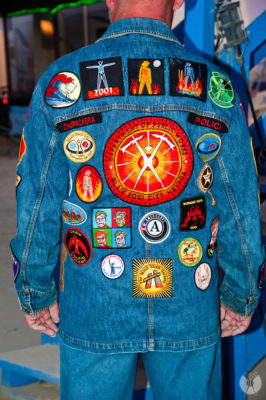
To add to our archives, please download and fill out our Playa Artifacts PDF form. Make sure you include the year the object was made.
On the playa, bring the form and the Playa Artifacts to the ARTery in Center Camp where we provide you with a sealed bag to store your contribution. We also have forms for you to fill out if you didn’t bring one with you.
Off the playa, mail this form and your Playa Artifacts to:
Material Culture
c/o Burning Man
P.O. Box 884688
SF, CA
94188-4688
You can also submit a JPG image of your playa artifacts to our online Material Culture Archives. You can search the Gallery by types of artifacts: pendants, patches, stickers, etc. Please send the artifacts and form to us for our office archives as well. These objects are displayed at the Burning Man office and will be used for future exhibitions.
Please send any questions or comments about the artifacts to material-culture@burningman.org. Thank you!
MOOP Map Archive
Burning Man is the largest Leave No Trace event in the world, and Black Rock City continues to be recognized by the Bureau of Land Management for not only maintaining Leave No Trace standards, but for setting high standards by which other recreation events are measured. And that wouldn’t be possible without the concerted efforts of Burning Man participants who pick up after themselves (and others).
The MOOP Map is Burning Man’s Leave No Trace record for each year. It reflects what the Department of Public Works’ Playa Restoration Team found (and removed) when they conducted their post-event sweep of the Black Rock City event site, ultimately returning the playa to its pristine condition.
AfterBurn Reports
The AfterBurn Report is an annual year-end report which provides Burning Man participants, the media, and the public at large with an up-to-date overview of Burning Man Project and Black Rock City operations, our objectives, and the obstacles we encounter. Our hope is that this report will help provide a context for understanding the organization and the people behind the event. “Burning Man” is the name we use to define the scope, scale and dynamic nature of what we all do together.
Burning Man Project includes a full-time staff, a larger group of part-time seasonal staff, and thousands of event staff (both paid and volunteer) as well as participants who take responsibility for making Burning Man happen. The AfterBurn Report explains what our various departments do, why they do it, what changes occur year to year, where Burning Man Project’s money goes, our successes and failures, and our vision for the future.
Census Archive
The Census is one of the primary ways the Burning Man organization tracks changes in population, behavior, and attitudes of event participants. The more we understand the makeup of Black Rock City and the diverse kinds of Burning Man experiences, the better equipped we are to meet the needs of the community and help Burning Man culture continue to flourish.
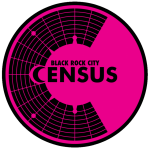 Data from the Census also helps the organization represent the Burner community in conversations with local, state and federal agencies and elected officials. Census data is also used to understand the impact we have on the environment. Ultimately, we want to reduce our carbon footprint and make the event more sustainable. In the last few years, the Burning Man organization has rolled out several programs (like Burner Express) to encourage these efforts and the Census is one way that we track the year-to-year impact of those measures with information like the number of vehicles on the road, the number of people per vehicle and the increased use of the Burner Express.
Data from the Census also helps the organization represent the Burner community in conversations with local, state and federal agencies and elected officials. Census data is also used to understand the impact we have on the environment. Ultimately, we want to reduce our carbon footprint and make the event more sustainable. In the last few years, the Burning Man organization has rolled out several programs (like Burner Express) to encourage these efforts and the Census is one way that we track the year-to-year impact of those measures with information like the number of vehicles on the road, the number of people per vehicle and the increased use of the Burner Express.
More importantly, however, the Census is about YOU. This is your chance to have your presence in BRC counted and to learn about our community. It gives Burners the ability to understand just a bit more about the city that many of us call home. It is a chance for us all to learn who our neighbors might be, what brings them out to Burning Man, and what changes are taking place in BRC from one year to the next. Learn more about how the data is collected and analyzed or how to join the volunteer team, and then check out the Census results through the years:
2022 Census
2022 Population Analysis (PDF)
2019 Census
2019 Population Analysis (PDF)
2018 Census
2018 Population Analysis (PDF, 4MB)
2017 Census
2017 Summary Report (PDF, 8 MB)
2017 Population Analysis (PDF, 25 MB)
2016 Census
2016 AfterBurn Report (PDF, 20 MB)
2016 Annual Population Analysis (PDF, 49 MB)
2015 Census
2015 AfterBurn Report (PDF, 2.6 MB)
2015 Expanded Census Report (PDF, 5.2 MB)
2014 Census
2013 Census
2012 Census
2011 Census
2010 Census
2009 Census
2008 Census
2006 Census
2007 Census
2005 Census
*No surveys were taken in the years 2002 through 2004
2001 Survey
Annual Event Archives
Here you will find links that will take you on a trip through the past — through the history of Burning Man — from its early days on a small beach in San Francisco through its evolution into the bustling temporary metropolis of 70,000+ people and sprawling diaspora that Burning Man has become today. Indeed, Burning Man has grown from a small group of people gathering spontaneously to a community of over a million people.
It is impossible to truly understand the event as it is now without understanding how it has evolved. For a high-level overview of each year, see our Historical Timeline.
For more details, look through the archives for each year, starting with Burning Man 1986-1996 for the legendary story of Burning Man’s beginnings. These archives contain descriptions of each year’s art theme, theme camps, large art installations, as well as maps, journals of our city being built, the newsletters to the community, issues of the Black Rock Gazette (a daily news publication that was produced and printed on the playa), and clean up reports for each year.
These archives represent the history of not only our event, but our community and our culture, as they are one in the same.
Historical Publications
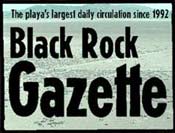 In Burning Man’s pre-Internet years, the community relied on printed communications to stay connected. These early publications contain some of the first essays on the emerging culture and philosophy, and provide some intriguing insights into Burning Man’s evolution.
In Burning Man’s pre-Internet years, the community relied on printed communications to stay connected. These early publications contain some of the first essays on the emerging culture and philosophy, and provide some intriguing insights into Burning Man’s evolution.
Building Burning Man
Published from 1991-1999, this newsletter was a primary means of connecting the community between Burns. Its pages feature some seminal writing on the event and the culture from Larry Harvey, Stuart Mangrum, Louis Brill, Erik Davis, and other early observers, including the mysterious Darryl VanRhey (hint: it’s an anagram).
Black Rock Gazette
Founded by Danger Ranger in 1992, Black Rock City’s first daily newspaper was published onsite during the event until 2005. Occasionally informative, frequently absurd, its wry humor was rooted in the prankster culture of the Cacophony Society and the outsider spirit of ‘zine culture.
Burning Man Journal
In 2000 the Building Burning Man newsletter morphed into a glossy four-color magazine with an emphasis on art and culture. Its wider coverage also facilitated discussions of post-event issues like playa restoration and helped launch the Regional Network.
Tip Sheets
Starting in 2007, when the population of Black Rock City started to outstrip its ability to communicate culture across the broad expanse of its citizenry, Burning Man began creating “Tip Sheets” to provide key information to participants, whether they be newbies or multi-year veterans. They are handed out at the Greeters Station, to educate people about the ins and outs of being a citizen of Black Rock City.

